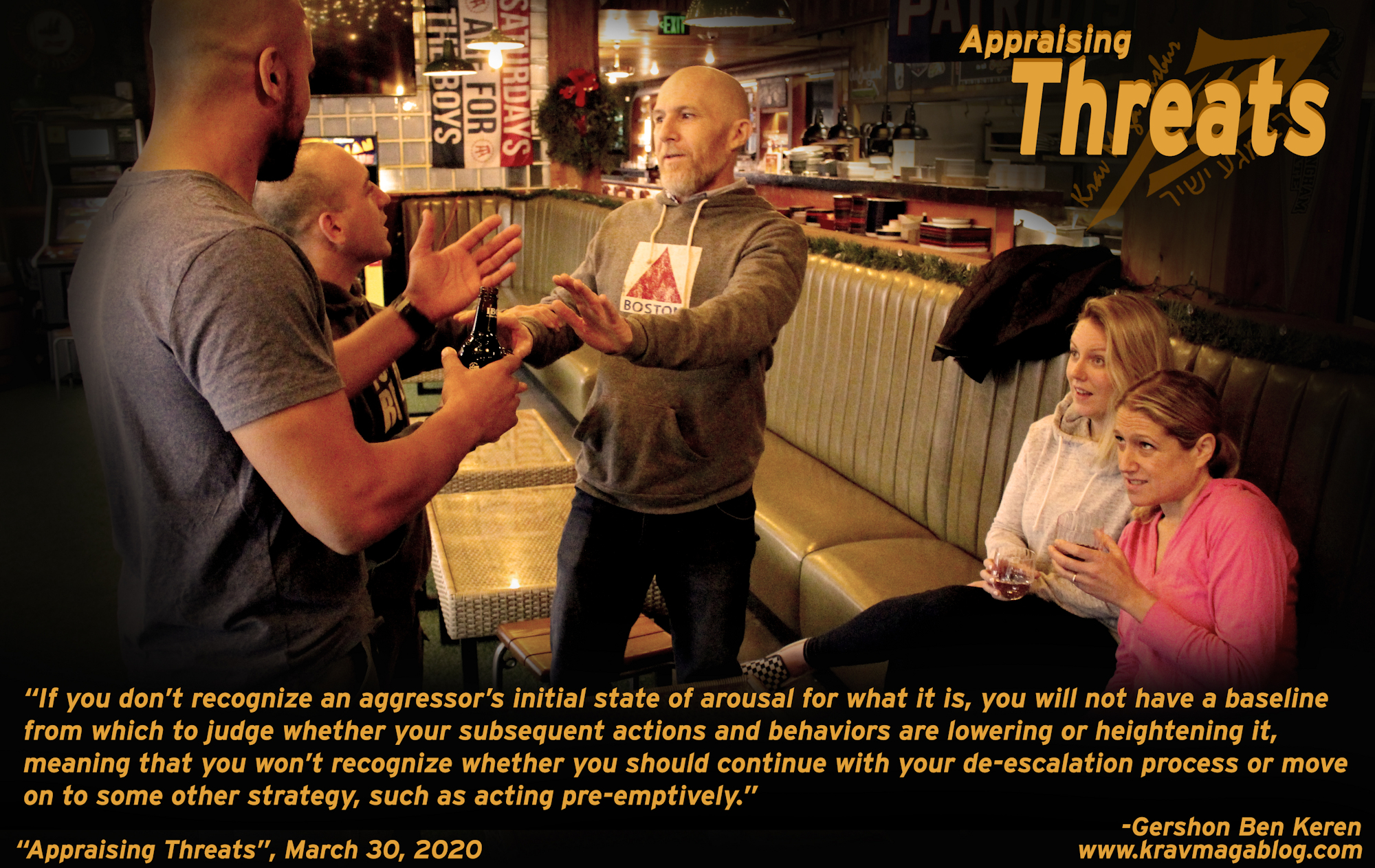Fighting A Southpaw, is an article written by Gershon Ben Keren, a 5th Degree Black Belt in Krav Maga, who teaches Krav Maga in Boston, MA. He has also authored three Amazon best-Selling Books on Krav Maga.
I remember a boxing coach advising me about sparring with Southpaws (left-handed fighters, who fight with their right hand/leg forward), not to worry about “looking good” i.e., it would likely take the form of a clunky, clumsy mess etc. I have to say he was largely correct. I would also say that there’s a real difference between sparring with a “true” left hander, rather than a right-handed person who believes that they fight better as a Southpaw – in my experience, this is usually the result of a right-handed person not being particularly good at sparring in an orthodox stance, and switching in the hope that somehow this makes them better; in the short-term they often enjoy some success as people have more experience sparring against people in an orthodox stance than they do against southpaws, however because they’re not truly able to naturally function this way they quickly stagnate, and in many cases regress, becoming worse at sparring than they were before. The answer to slow progress in sparring is very rarely – I hate to use the word never - solved by changing your lead hand/foot to the opposite. In this article I want to look at why left-handedness is a trait that hasn’t evolved away, and a few simple tactics to deal with the truly left-handed fighter.
On average, left-handed people account for 10% of any society/population; and there are no populations where left-handedness accounts for over 25% of people. It’s also of note that compared to ape populations, right-handedness in humans is significantly higher, making this bias a very human trait. However, left-handedness has not evolved out, and remains, suggesting that the genetics behind hand dominance is either an extremely complex affair (and so it is unlikely to do so) or that the benefits of being left-handed, increase when the number of left-handed people decrease i.e., those members of a left-handed minority have an evolutionary advantage as long as they exist as a small group, alongside a right-handed majority. Several studies have shown that left-handed people are over-represented in professional sports, such as boxing, but not in solo sports such as running and cycling, suggesting that in “interactive” pursuits, involving two competitors – such as fencing and other combat sports - being left-handed may present some advantages. It is worth noting that from a sample size perspective the number of people engaged in professional sports is relatively small. These findings support what is known as the “Fighting Hypothesis” to explain why left-handedness remains i.e., left-handed people have an advantage when it comes to combat, and this is why this trait has survived, etc. What is perhaps more important, where the “fighting hypothesis” is concerned is not the number of left-handed people in professional sports, but the number of “wins” they have – however it could be argued that anyone to even be playing at the professional level, must have “won” a lot at the amateur/non-professional level. Various studies involving boxers and wrestlers have shown that collectively left-handers statistically – as a group - have more success than right-handers, and even those who are ambidextrous or who use a mixed approach i.e., non- ambidextrous individuals who switch/change their dominant hand to an equal degree. Once again it should be noted that the sample sizes were relatively small, and there are other physical factors, such as reach, muscle-type etc., that could account for the success of left-handed people; with hand dominance merely being a confounding variable. However, there is also not enough evidence to suggest that the fighting hypothesis is wrong.
In terms of dealing with Southpaws – especially in sparring scenarios – there are two things that you need to focus on (and these also conversely work for Southpaws dealing with Orthodox fighters). Firstly, you need to make sure that your front foot is on the outside of theirs; this allows you to “pivot” round them, rather than the other way round. This may seem like a small thing, but it is extremely important, and vital to controlling and restricting their movement. Whenever they attempt to move to their right, you need to move to your left, so that your front foot remains to the left of theirs, so you cut off their movement and force them to pivot and turn inside of you. Also, you need to move away from their left-hand i.e., their power hand, by continually pivoting and moving to your left – the reverse direction to the way you would move if dealing with an orthodox fighter i.e., you don’t want to be moving towards their strongest hand. This is why right-handed people who fight/spar Southpaw, usually fail, as the hand which should be their power-hand in a Southpaw stance is their left, and they lack the coordination to deliver/throw it properly; it’s possible for them to fool themselves in light sparring that this isn’t the case, but when they are put under pressure where the contact and force is much greater, this short-coming soon comes to light. One mistake to avoid when dealing with a Southpaw is to avoid overcommitting with forward movement. With the right-foot forward a Southpaw can easily pivot to your left-side (away from your right-hand), if you move too far forward when throwing your Jab or lead hand strike, making you vulnerable – as they are on your dead side.
There is a good deal of evidence – though certainly not conclusive – that left-handedness may not have evolved out because it gave a small minority an evolutionary advantage when it came to fighting e.g., left-handed people are more experienced at fighting right-handed people than the other way round. There are certainly advantages to facing a right-handed person with their left-foot leading when fighting as a Southpaw however it really only consistently works for someone who is truly left-handed, as opposed to somebody who “forgets” which foot they are leading with because they are not truly in control of their movement e.g., they unintentionally walk their feet, rather than shuffle etc.
0 COMMENTS















